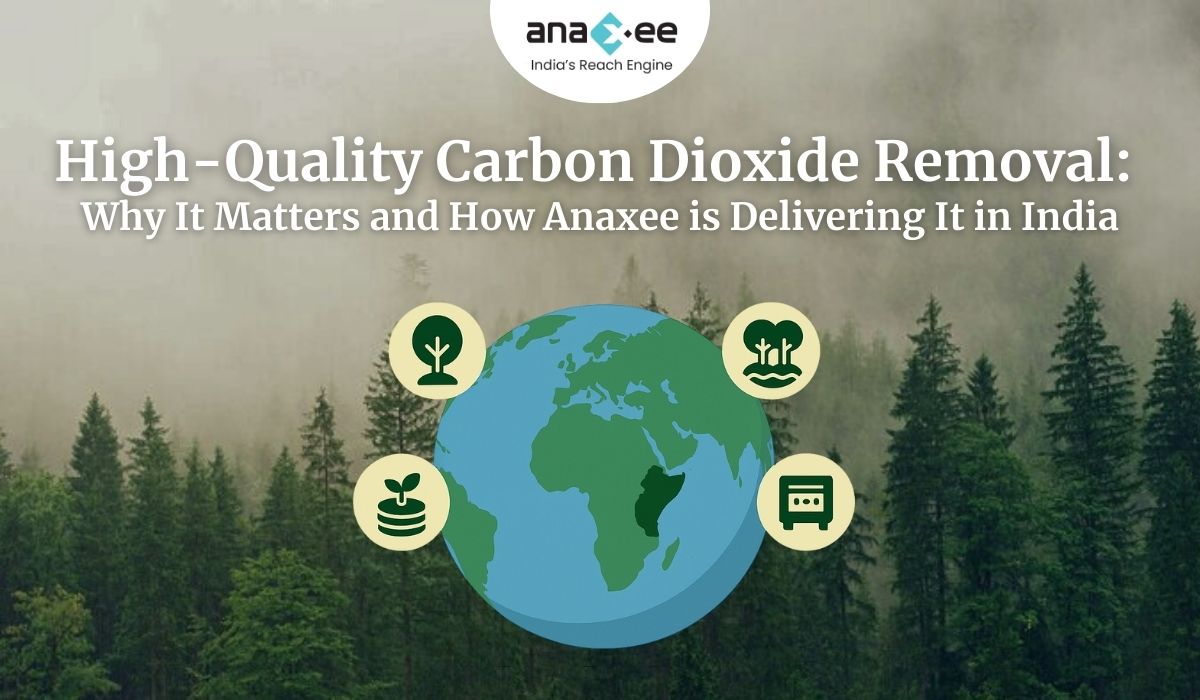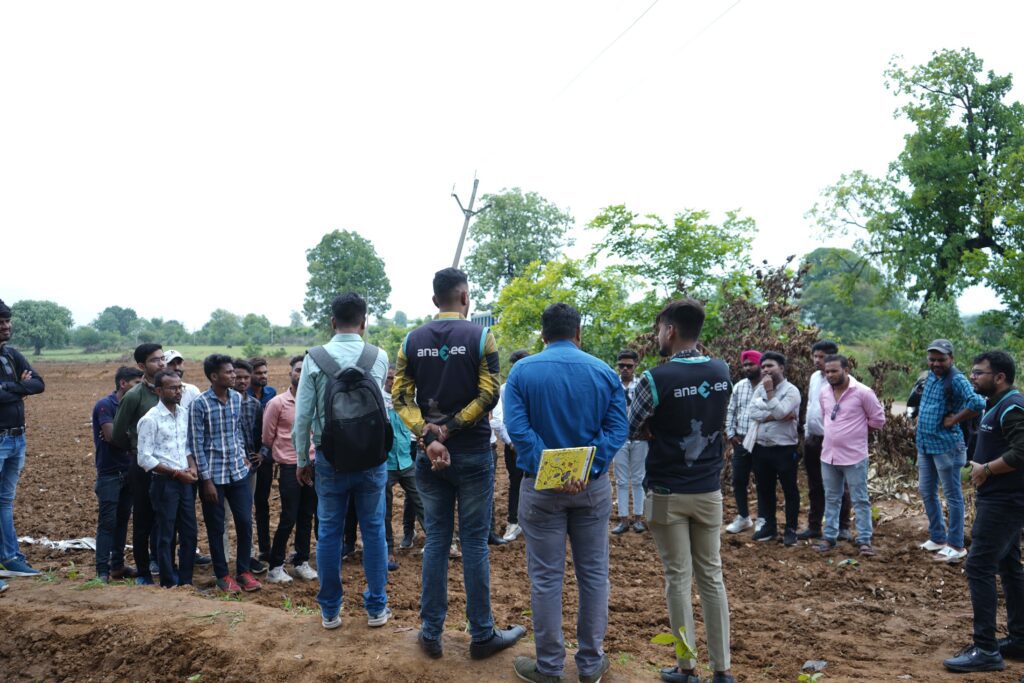Introduction: Why Carbon Removal Matters Now
The climate clock is ticking. The IPCC’s AR6 report is clear: reducing emissions alone will not keep us under the 1.5°C threshold. Alongside decarbonization, the world must actively remove between 100–1000 billion tonnes of CO₂ by 2100. That means by 2050, we need 5–10 billion tonnes of carbon removed annually.
But not all carbon removal is created equal. Many projects claim removals, yet face problems—weak baselines, double counting, lack of monitoring, or poor durability. This is why the 2025 Criteria for High-Quality Carbon Dioxide Removal was published—to set clear principles that ensure credibility, durability, and justice in the CDR industry.
For India, where millions depend on land, forests, and agriculture, ensuring quality in carbon projects is not just about climate—it is about livelihoods, ecosystems, and trust. And that’s where Anaxee steps in.
2. What Makes CDR “High-Quality”?
The 2025 criteria highlight seven essential pillars that define quality in carbon removal projects:
-
Social and Environmental Justice – projects must avoid harms and deliver fair benefits to local communities.
-
Environmental Integrity – protecting biodiversity, soil health, and water.
-
Additionality and Baselines – removals must be real and beyond business-as-usual.
-
Measurement, Monitoring, Reporting, Verification (MRV) – science-based, transparent, and third-party verified.
-
Durability – ensuring captured carbon stays out of the atmosphere for decades or centuries.
-
Leakage Control – avoiding displacement of emissions elsewhere.
-
Effective Project Management – governance, transparency, and accountability.
Without these principles, carbon projects risk becoming “paper credits”—numbers that look good for corporate reporting but fail to deliver real climate impact.
3. Nature-Based vs. Engineered CDR
The report covers both nature-based (forestation, mangroves, soil carbon, agroforestry, rock weathering) and engineered methods (direct air capture, mineralization, biomass with storage).
-Nature-based solutions (NbS): cost-effective, co-benefits like biodiversity and livelihoods, but challenges in durability and MRV.
-Engineered solutions: durable storage, but expensive and limited in scale today.
In India, the immediate opportunity lies in NbS—where rural landowners, farmers, and communities can participate, provided projects follow high-quality criteria.
4. The Risk of Low-Quality Carbon Projects
A growing criticism of carbon markets is the prevalence of low-quality credits:
-Plantations in wrong ecosystems (biodiversity loss).
-Short-term projects that collapse after a few years.
-Lack of consent or benefit-sharing with communities.
-Inflated baselines that exaggerate impact.
Such failures create reputational risk for buyers and resentment among communities. Worse, they delay real climate action. That’s why frameworks like the 2025 Criteria matter—they separate meaningful carbon removals from greenwashing.
5. How Anaxee Adds Value in High-Quality CDR
Anaxee is positioning itself as India’s Climate Execution Engine, ensuring projects meet the highest global benchmarks. Here’s how:
-Last-Mile Reach: With 40,000+ Digital Runners across 26 states, Anaxee mobilizes rural communities at scale for afforestation, soil carbon, and agroforestry projects.
-dMRV Tools: In-house apps, geotagging, and AI-driven verification ensure transparent and traceable monitoring of every tree, farm, and intervention.
-Community-Centered Models: Farmers and landowners are direct beneficiaries—through revenue share, training, and alternative livelihoods.
-Transparency & Compliance: Projects align with Verra (VM0047, ARR, Soil Carbon), Gold Standard, and now emerging high-quality CDR criteria.
-Durability Assurance: Long-term contracts, diversified project portfolios, and adaptive management mitigate reversal risks.
In short, Anaxee bridges the gap between global buyers demanding quality and local communities implementing projects on the ground.
6. India’s Role in the Global CDR Market
Globally, companies like Microsoft are already purchasing millions of tonnes of removals, For India, this creates an economic opportunity:
-Farmers and rural communities can access carbon finance.
-Corporates can meet CCTS (Carbon Credit Trading Scheme) compliance and voluntary commitments.
-India can position itself as a hub for NbS carbon credits, provided the projects are high-quality.
Anaxee’s role is to ensure India’s carbon projects are not just cheap offsets, but globally credible removals that meet durability, MRV, and justice standards.
7. The Road Ahead: Scaling Quality, Not Just Quantity
Scaling CDR is not just about planting millions of trees—it’s about doing it right. The future of the carbon market depends on trust. That means:
-Buyers must demand high-quality removals only.
-Developers must invest in dMRV and transparent reporting.
-Communities must be equal partners in the climate economy.
Anaxee’s Climate Command Centre, community-first models, and tech-driven transparency offer a template for how India can scale CDR without repeating past mistakes.
8. Conclusion
High-quality carbon removal is no longer optional—it is the foundation of credible climate action. The 2025 criteria give the world a common yardstick. For India, the challenge is turning these principles into practice at scale.
Anaxee is already doing this—by combining tech, trust, and last-mile reach to deliver projects that remove carbon, support communities, and stand up to global scrutiny.
The climate challenge is massive, but with quality, transparency, and collaboration, India can be a leader in the next generation of carbon removal.
About Anaxee:
Anaxee drives large-scale, country-wide Climate and Carbon Credit projects across India. We specialize in Nature-Based Solutions (NbS) and community-driven initiatives, providing the technology and on-ground network needed to execute, monitor, and ensure transparency in projects like agroforestry, regenerative agriculture, improved cookstoves, solar devices, water filters and more. Our systems are designed to maintain integrity and verifiable impact in carbon methodologies.
Beyond climate, Anaxee is India’s Reach Engine- building the nation’s largest last-mile outreach network of 100,000 Digital Runners (shared, tech-enabled field force). We help corporates, agri-focused companies, and social organizations scale to rural and semi-urban India by executing projects in 26 states, 540+ districts, and 11,000+ pin codes, ensuring both scale and 100% transparency in last-mile operations. Connect with Anaxee at sales@anaxee.com



